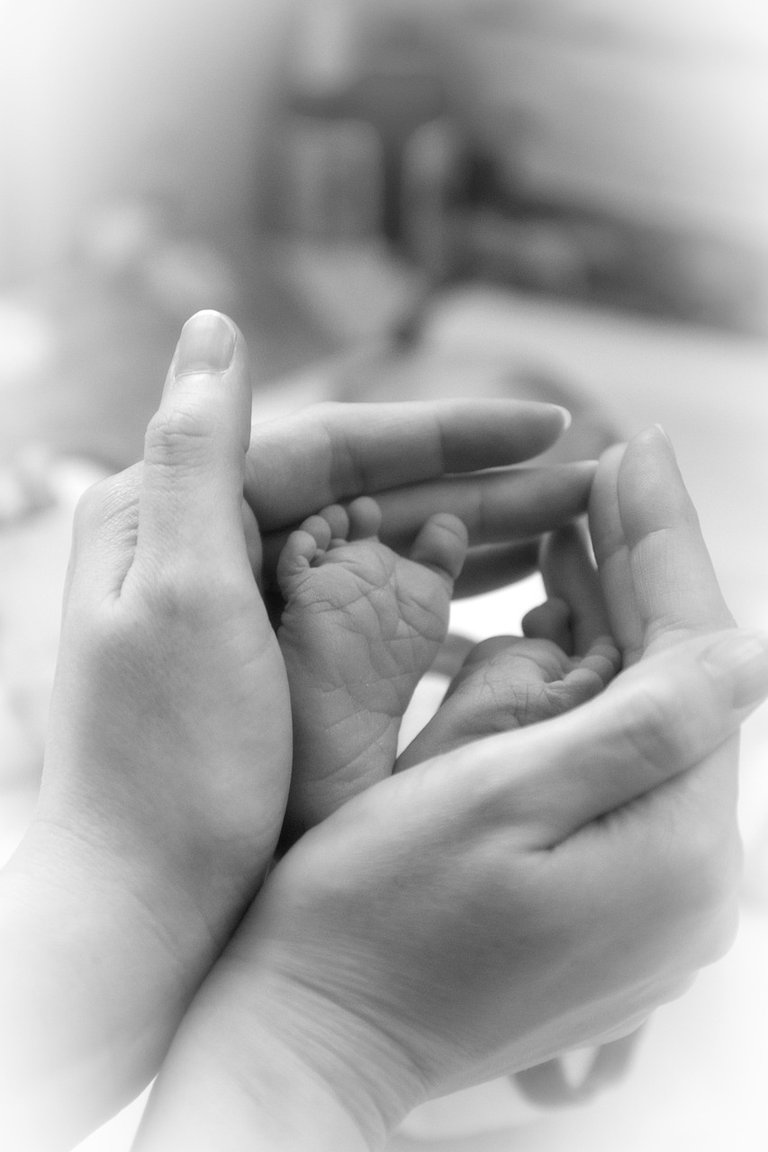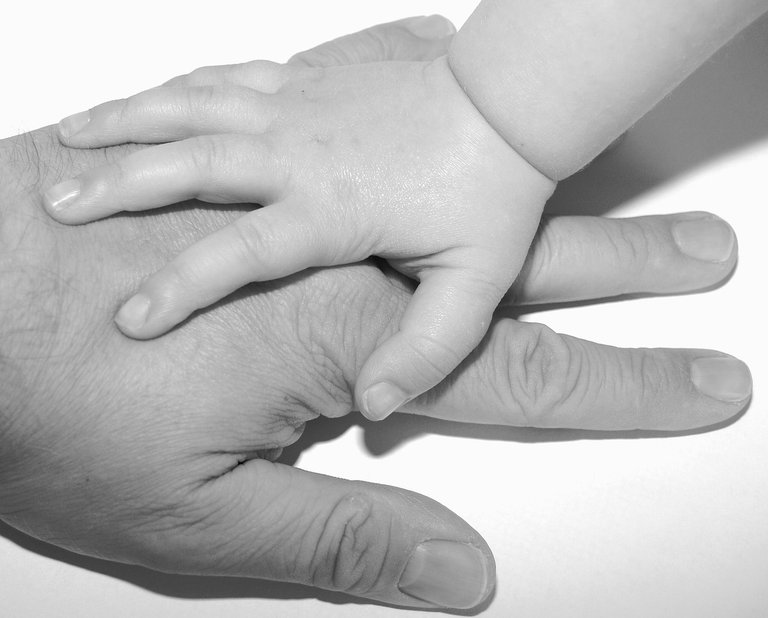Durante mucho tiempo se dijo y se señalaba a lo padres de niños que evolucionaban hacia el autismo, que no fueron capaces de recibir al niño con amor incondicional, que sus primeras relaciones, sus pautas de crianza, fueron frías y desprovistas de afecto, por lo tanto, era la consecuencia de que el niño desarrollara esas pautas de comportamiento.
Nada más lejos de la realidad.

Hoy en día, existe un acuerdo general en que el trastorno del espectro autista (TEA) no está asociado con la “crianza fría” y simplemente representa una forma de neurodivergencia.
La “mala crianza” no causa autismo
Por otra parte, investigaciones han sido determinantes al concluir que los factores que rodean y caracterizan a la teoría del apego pueden considerarse iguales para toda la población en general, ya que es crucial para el adecuado desarrollo de todos los niños. Por lo tanto, la premisa de que a causa de una inadecuada relación parental se origina e instala el autismo y por enden se hace responsable a los padres,es falsa.
Lo que ha ganado el interés de los investigadores y profesionales que trabajan con bebés y niños ha sido determinar cómo influe la calidad de las pautas intuitivas de crianza, incluyendo los tipos de apego, en la disminución de los niveles de compromiso de las dimensiones del espectro autista.
El estudio de esos otros factores que interfieren entre la calidad de la responsividad y el estilo vincular del niño, puede ser de gran relevancia a la hora de intentar reducir la sintomatología autista y promover el establecimiento de vínculos de apego seguros.
Dificultades en el establecimiento de vinculos de apego seguro en los niños con trastorno del espectro autista.
El apego, vínculo que determina la calidad de relación entre la figura de crianza y el niño.

Fotografía tomada con mi teléfono Redmi11. Reseña del cuento
John Bowlby (1986, 1998), psiquiatra y psicoanalista, trabajó durante años en clínica infantil y planteó la teoría del apego, la que concibió como una tendencia de los seres humanos a establecer vínculos afectivos sólidos con personas determinadas a través de la vida.
Todos hemos pasado por la infancia. Es una etapa de juegos, de afectos, de apegos, construcción de la afectividad y de emocionalidad, cuyo acento caracterizará gran parte de nuestra vida adulta. Los niños que han tenido el privilegio de contar con figuras de crianza, que han logrado crear y consolidar un vínculo seguro, tendrán lo que se denomina una base de apego seguro.
Se dice que un niño establece un tipo de apego seguro cuando vive una relación de calidez y receptividad emocional con la persona que lo cuida. Esta relación hace que se sienta seguro, querido y aceptado.
La importancia del apego seguro en el desarrollo personal.
El apego seguro se forma cuando la madre, el padre, o persona cuidadora está totalmente atento a las necesidades básicas y de afecto del niño. La psicología del desarrollo ha demostrado que durante los primeros años de vida son primordiales los aprendizajes de tipo afectivo y emocional. Los vínculos afectivos son una necesidad del ser humano, primariamente, biológica y de protección, posteriormente, porque nos ayuda a construir en forma equilibrada sentimientos y emociones.
Pero no es solo eso, el apego seguro, consolida en forma progresiva la propia estima, la autonomía y la confianza del niño. Los adultos a cargo deben estar preparados para recibirlo en forma incondicional, con amor incondicional. Es decir, el niño es querido por sus figuras afectivas por lo es. Este cariño, durante toda la infancia debe ser profesado sin que el niño tenga la necesidad de pagar cuotas, como obediencia, sumisión o conformismo, para que pueda experimentar el regalo de ser bienvenido.
El niño que experimenta un apego seguro, siente angustia ante la separación de su cuidador, clama y seguridad cuando regresa; muy pocas veces se presentan situaciones de evitación y ansiedad, mucho menos prolongadas y/o que no puedan ser calmadas prontamente. Esto se debe a que la creación de un vínculo unívoco, crea en el niño la búsqueda de formas cada vez más adaptativas e independientes de hacer frente a lo que le molesta o le causa estrés.
En caso contrario, cuando las figuras que deben recibir al niño, no lo hacen de la forma esperada, incondicionalmente; según Lusmenia Garrido, se instalan otros tipos de apego, como el ansioso ambivalente, el ansioso evitativo o el apego desorganizado. Estos tipos de apego van a crear en la persona, durante la edad adulta, conductas desajustadas, erráticas y poco adaptativas.
En la revista electrónica Psicología y Mente, se ofrecen artículos de interés sobre este tema, educación y desarrollo infantil, describen característcas de las personas que se caracterizan por haber tenido una base segura de apego, buscan:
-El contacto y las relaciones sociales y comunicativas con los demás.
-No temen al abandono.
-Contruyen mecanismos para autorregular sus emociones.
-Sus relaciones se caracterizan por manejarse en forma clara y propositiva.
-Las relaciones personales, familiares, amistosas y de pareja vienen dadas, en forma natural, en función de dejar espacio para mirar a los otros tal y como son, mirarlos en sus diferencias y saber apreciarlos tal y como son.
-Pueden construir relaciones íntimas y de proximidad con otros.
-Son personas que en la familia aprenden a convivir, buscar la unión y el bienestar para todos.
-Autorregulan muy bien sus emociones y sentimientos, permitiéndose sentir una gran variedad de ellos, sin rechazar ninguno.
-Tienen un nivel adecuado de autoestima.
-No miran a las otras personas como amenezas que lo puedan desplazar en el plano laboral, personal, afectivo o social.
A los padres y futuros padres.
Es muy importante que el niño sea bienvenido, aceptado en forma incondicional. Esto no significa que a medida que el desarrollo lo reclame, colocar normas y reglas ajustadas a la edad, enseñar con buenos ejemplos el respeto, la tolerancia y demás valores, hagan del convivir diario una aventura positiva.
No debemos confundir los términos aceptación incondicional con dejar hacer o laxitud de límites. Saber brindar al niño un ambiente seguro, a todos los niños, sean neurotípicos o no, es saber consolidar el no como una orden a seguir y aceptar, el reconocer la autoridad y el amor hacia las figuras de crianza, el respeto a los ancianos, la protección a los seres vivivos y a la naturaleza.
Por otra parte, la necesidad e importancia de una base de apego segura, no sólo se remite a la infancia; sino también a la edad adulta. Te explico. En todas las relaciones que construimos, en edad adulta, bien sea de pareja, de amistad o familiar, tener una base de apego seguro es como tener un lugar, dentro y fuera de nosotros, que funge como puerto intersubjetivo, donde anclamos nuestra relaciones y a la vez proyectamos lo que somos.
De niños dependemos de la calidez del contacto, de la proximidad de la respiración y el calor de la relación con esa figura de protección y apoyo; el vínculo surge per se de una forma casi automática. Por el contrario, cuando somos adultos dependemos más de factores externos, oportunidades de exito y de realización personal.
Si tenemos alguno de los otros apegos, como el evitativo o el intermitente, mediante terapia y técnicas de instrispección, superar esos estilos de apego, progresar hacia un estado de mayor seguridad, esparte de nuestro compromiso. Comprender nuestras heridas, aceptarnos incondicionalmente a pesar de nuestras imperfecciones humanas, ¡bienvenidos a la humanidad de los seres humano!, sanará la autoestima y nos proveerá de herramientas para gestionar nuestros recursos personales.
Estamos rodeados de personas adultas que luchan día a día con las contradicciones de su propio ser y estilos de vida, sin darse cuenta de que muy probablemente estén en presencia de una base de apego inadecuada que se ha prolongado en los años.

Traducción: con Google.
Soy Sandra Cabrera, licenciada en Dificultades para el Aprendizaje, con estudios en Educación Especial Integral, Planificación Educativa y Literatura Infantil. Si te interesan los temas sobre educación especial, la discapacidad y las condiciones especiales del desarrollo, puedes contactarme en los canales de Telegram y Whatsaap, @Trastornos del Aprendizaje. En las redes sociales Instagram y Facebook, @sandracabrera. En la cuenta de spreaker, @sandracabrerapodcast.
For a long time it was said and pointed out to the parents of children who were evolving towards autism, that they were not able to receive the child with unconditional love, that their first relationships, their parenting patterns, were cold and devoid of Affection, therefore, was the consequence of the child developing those behavioral patterns.
Nothing is further from reality.

Today, there is general agreement that autism spectrum disorder (ASD) is not associated with “cold parenting” and simply represents a form of neurodivergence.
“Bad parenting” does not cause autism
On the other hand, research has been decisive in concluding that the factors that surround and characterize attachment theory can be considered the same for the entire population in general, since it is crucial for the adequate development of all children. Therefore, the premise that autism originates and is established due to an inadequate parental relationship, and therefore parents are held responsible, is false.
What has gained the interest of researchers and professionals who work with babies and children has been determining how the quality of intuitive parenting patterns, including types of attachment, influences the decrease in levels of commitment of the dimensions of the spectrum. autistic.
The study of these other factors that interfere between the quality of the child's responsiveness and attachment style can be of great relevance when trying to reduce autistic symptoms and promote the establishment of secure attachment bonds.
[Difficulties in establishing secure attachment bonds in children with autism spectrum disorder.](https://repositorio.comillas.edu/xmlui/bitstream/handle/11531/22314/TFG-Redondo%20Urbieta%2c%20Leire .pdf?sequence=1&isAllowed=y)
Attachment, a bond that determines the quality of the relationship between the parenting figure and the child.
John Bowlby (1986, 1998), psychiatrist and psychoanalyst, worked for years in a children's clinic and proposed the theory of attachment, which he conceived as a tendency of human beings to establish solid emotional bonds with certain people throughout life. .
We have all gone through childhood. It is a stage of games, affection, attachments, construction of affectivity and emotionality, whose accent will characterize much of our adult life. Children who have had the privilege of having nurturing figures, who have managed to create and consolidate a secure bond, will have what is called a secure attachment base.
It is said that a child establishes a type of secure attachment when he experiences a relationship of warmth and emotional receptivity with the person who cares for him. This relationship makes him feel safe, loved and accepted.
[The importance of secure attachment in personal development.]( https://www.mentesabiertaspsicologia.com/blog-psicologia/blog-psicologia/la-importancia-del-apego-seguro-en-el-desarrollo-personal#: ~:text=%C2%BFQu%C3%A9%20is%20understood%20by%20attachment,feel%20safe%2C%20loved%20and%20accepted.)
Secure attachment is formed when the mother, father, or caregiver is fully attentive to the child's basic and affection needs. Developmental psychology has shown that during the first years of life, affective and emotional learning is essential. Emotional bonds are a need of the human being, primarily biological and subsequently protective, because it helps us build feelings and emotions in a balanced way.
But it's not just that, secure attachment progressively consolidates the child's self-esteem, autonomy and confidence. The adults in charge must be prepared to receive it unconditionally, with unconditional love. That is, the child is loved by her emotional figures because of what he is. ** This affection, throughout childhood, must be professed without the child having the need to pay fees, such as obedience, submission or conformity, so that he can experience the gift of being welcomed **.
The child who experiences a secure attachment feels anxiety upon separation from his caregiver and cries out for security when he returns; Very rarely do situations of avoidance and anxiety occur, much less prolonged and/or ones that cannot be calmed promptly. This is because the creation of a univocal bond creates in the child the search for increasingly adaptive and independent ways to deal with what bothers him or causes stress.
Otherwise, when the figures that must receive the child do not do so in the expected way, unconditionally; According to Lusmenia Garrido, other types of attachment are installed, such as ambivalent anxiety, avoidant anxiety or disorganized attachment. These types of attachment will create in the person, during adulthood, maladjusted, erratic and poorly adaptive behaviors.
 [Pixabay](https://pixabay.com/es/photos/familia-mujeres- hombre-posando-1434730/)
[Pixabay](https://pixabay.com/es/photos/familia-mujeres- hombre-posando-1434730/)
In the electronic magazine Psicología y Mente, articles of interest are offered on this topic, education and child development, they describe characteristics of the people who are characterized by having had a secure base of attachment, they seek:
-Contact and social and communicative relationships with others.
-They do not fear abandonment.
-They build mechanisms to self-regulate their emotions.
-Their relationships are characterized by being handled in a clear and purposeful manner.
-Personal, family, friendly and couple relationships are given, naturally, based on leaving space to look at others as they are, look at them in their differences and know how to appreciate them as they are.
-They can build intimate and close relationships with others.
-They are people who in the family learn to live together, seek unity and well-being for everyone.
-They self-regulate their emotions and feelings very well, allowing themselves to feel a wide variety of them, without rejecting any.
-They have an adequate level of self-esteem.
-They do not see other people as threats that can displace them at work, personal, emotional or social levels.
To parents and future parents.
It is very important that the child is welcomed, accepted unconditionally. This does not mean that as development demands it, establishing norms and rules adjusted to age, teaching respect, tolerance and other values with good examples, will make daily living together a positive adventure.
We should not confuse the terms unconditional acceptance with letting do or laxity of limits. Knowing how to provide the child with a safe environment, for all children, whether they are neurotypical or not, is knowing how to consolidate no as an order to follow and accept, recognizing the authority and love towards nurturing figures, respect for the elderly, protection of living beings and nature.
On the other hand, the need and importance of a secure attachment base does not only refer to childhood; but also into adulthood. I explain to you. In all the relationships we build, in adulthood, whether as a couple, friendship or family, having a secure attachment base is like having a place, inside and outside of us, that serves as an intersubjective port, where we anchor our relationships and At the same time we project what we are.
As children we depend on the warmth of the contact, the proximity of the breath and the warmth of the relationship with that figure of protection and support; the link arises per se in an almost automatic way. On the contrary, when we are adults we depend more on external factors, opportunities for success and personal fulfillment.
If we have any of the other attachments, such as avoidant or intermittent, through therapy and introspection techniques, overcoming these attachment styles, progressing towards a state of greater security, is part of our commitment. Understanding our wounds, accepting ourselves unconditionally despite our human imperfections, welcome to the humanity of human beings!, will heal self-esteem and provide us with tools to manage our personal resources.
We are surrounded by adults who struggle every day with the contradictions of their own being and lifestyles, without realizing that they are most likely in the presence of an inadequate attachment base that has lasted for years.

Translation: with Google.
I am Sandra Cabrera, graduate in Learning Difficulties, with studies in Comprehensive Special Education, Educational Planning and Children's Literature. If you are interested in topics about special education, disabilities and special developmental conditions, you can contact me on the Telegram and WhatsApp channels, @Learning Disorders. On the social networks Instagram and Facebook, @sandracabrera. On the spreaker account, @sandracabrerapodcast.




¡Bienvenidas las Delegaciones / Welcome Delegations
Trail de Curación / Curation Trail
Gracias por otro excelente contenido 💙Saludos @sandracabrera. Ciertamente, todavía se oyen voces que relacionan el TEA con el trato que reciben los niños de parte de sus cuidadores y como dices, nada más lejos de la verdad. Por eso muchísimas gracias por tocar el tema del apego desde las relaciones bien o mal establecidas entre padres e hijos.
Si hay algo que mis hijos me han enseñado es que a pesar de no demostrar efusividad al abrazar o al saludar, ellos están muy pendientes de todos y de todo, es decir, reconocen desde muy pequeños cuando hay tristeza en mamá, cuando dejarse abrazar y compartir un momento en familia. Muestran preocupación cuando salgo sola y preguntan a dónde voy y si me voy a tardar mucho y en ocasiones preguntan si pueden ir conmigo. Siento que también se trata de intentar comprender sus necesidades más allá de su condición. Eso, con seguridad lo sentirán y se hará recíproco.
Hermoso post @sandracabrera.
###:)Eso es muy hermoso, @esthersanchez
(ɔ◔‿◔)ɔ ♥